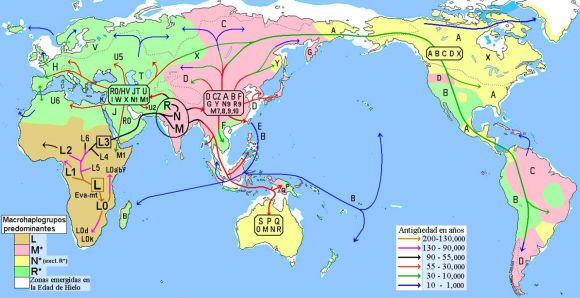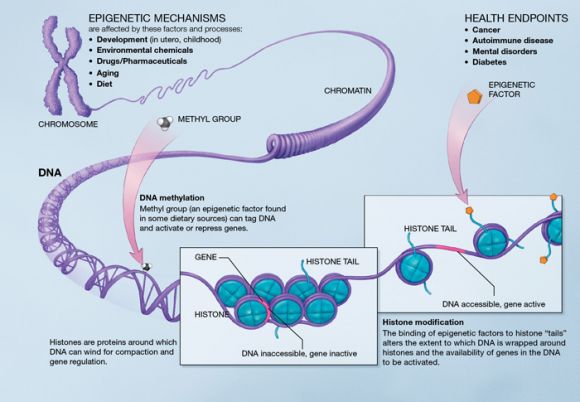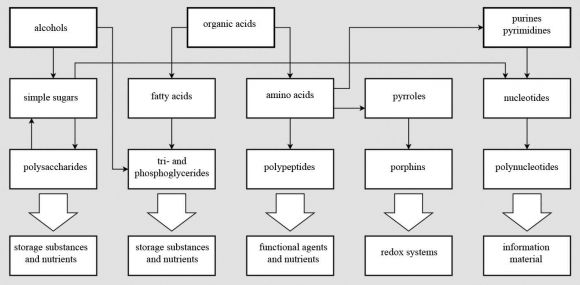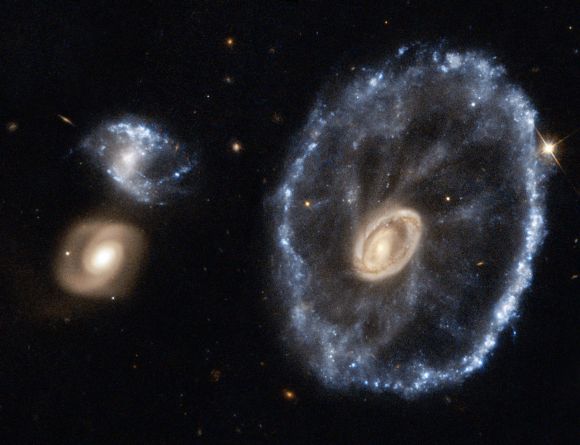Epigenetics: We Influence Our Genes and the Genes of Others
The mechanisms of life are more complex than previously thought, writes molecular biologist Gottfried Schatz, codiscoverer of mitochondrial DNA.
Table of contents
1. Foreword
Dr. Gottfried Schatz, emeritus professor at the University of Basel, was one of the individuals who discovered mitochondrial DNA. On our website, you can also read another text he gave us titled The Meaning of Life. And at the end of this text, you can read more detailed information about Gottfried Schatz’s work and the honors he received for his achievements.
The text below first appeared in the Beobachter (Swiss newspaper: https://www.beobachter.ch), and the newspaper was then very gracious to allow us to reprint the publication on our website.
Ernst Erb (EE) uploaded the articles written by Gottfried Schatz and also added the texts in the boxes, the links, and special fonts. In addition, EE selected the images you see below. The author (with photo) of the main text is naturally listed as Gottfried Schatz.
2. The Interview: Each person shares responsibility for their own genes
In the article below, Gottfried Schatz emphasizes the fact that the mechanisms of life are more complex than previously thought. This requires that each and every person have a more respectful attitude toward all things and beings.
Thomas Buomberger for the Beobachter:
You have dealt with the topic of life during your entire academic career. Do you now know what life is?
Gottfried Schatz:
Not exactly as it isn’t easy to define life. The best definition that focuses on life on earth is the following: life is a chemical system that reproduces itself and becomes increasingly complex by way of genetic variation and natural selection.

Biomolecules are also called natural products. Organisms produce these biological products in order to fulfil biological functions. See also these articles on organic chemistry and organometallic chemistry (vitamin B12).
When and how did life arise on the Earth?
We cannot yet answer these questions—and perhaps we will never be able to answer them. It seems most probable that life spontaneously formed from inanimate material under conditions that were very different from those of today. Our planet’s atmosphere didn’t yet contain any oxygen gas, the surface was very hot, meteors were crashing down, and active volcanos were found in abundance.
These conditions were probably conducive for the transformation of simple molecules like water and carbon dioxide into complex molecules (EE: coordination chemistry, sandwich compounds, bioinorganic chemistry, and biology), which today we classify as typical “molecules of life.” These include, for example, amino acids as the building blocks of proteins, and fats as the building blocks of membranes (EE: cell membrane, biological membrane, lipids, and lipid bilayer). These complex molecules of life that were still inanimate coalesced and underwent increasingly complex chemical reactions until finally one was able to reproduce itself and record its composition and mechanisms in genes.
Of course, such a spontaneous emergence of life from inanimate material appears to be infinitely improbable. But since nature repeated this experiment countless times over hundreds of millions of years, finally one was successful. And only one single one of these experiments had to be successful in order to ignite the spark of life.

If you are interested in the topic of the origin of life on earth, then you would also enjoy reading the article The Meaning of Life, Natural Science, and Belief in Religion. Gottfried Schatz’s approach to the topic is fascinating.
See also related Wikipedia entries on abiogenesis, last universal ancestor, and the obsolete theory of spontaneous generation from antiquity.
When we speak of organisms, we think of a hierarchy: at the very bottom bacteria and at the very top humans as the “crown of creation.” Can this line of thinking be justified?
Yes, so long as we refrain from using this hierarchy to raise claims of value and power. As a molecular biologist, I place organisms that are more complex higher in the hierarchy of life. Complexity is a measurement of the amount of information it requires to describe an object. It requires much less information to chemically and precisely describe a bacterium than it does to describe a dolphin, elephant, or human being.
Human beings, who are at the top of this complexity pyramid, can only live thanks to the “lower” organisms.
It is not until after we are born that these colonize on the surfaces of our body, primarily on the inner surfaces, such as those of the stomach and intestines. There is a growing body of evidence that these bacteria are very important for our well-being. It is similar for the viruses that settle in our bodies, without making us sick.
The human body is an ecosystem that is most likely home to tens of thousands of different organisms and couldn’t survive without other organisms such as plants. Some biologists even view life on earth as a singular organism in which all of the parts are functionally dependent on one another, even if they aren’t physically connected.

Statement from the National Institute of Health, NIH, United States: “Epigenetic mechanisms are affected by several factors and processes including development in utero and in childhood, environmental chemicals, drugs and pharmaceuticals, aging, and diet.”
The original article lists 10,000 billion (1013) human cells. As I had always heard 1014, that is 100 billion human cells, I asked Gottfried Schatz to explain the difference and he replied the very next day with the following: “The number of cells in our bodies calculated fluctuates between 1013 und 1014 because estimates are made that have an error factor of five. This means that each person can decide for themselves whether they want to round up or down. But you are right in that most sources cite the higher number. They all are based on a single estimate, but it would perhaps be best to use 1014 for the number of cells in our body, 1013 for the number of cells in our brain, and about 1015 to 2 x 1015 for the number of bacterial cells in our body.”
Was there a phase in evolution where humans became human?
That depends on how you define “human.” Our evolutionary process is a process that took place over several million years in which our ape-like ancestors gradually took on an increasingly human appearance and finally our species homo sapiens came into being. Chimpanzees split from the human line of evolution between seven to eight million years ago, but we don’t know exactly who our common ancestor was.
As part of our evolutionary process (EE: see also hominization, which is also called anthropogenesis), our brain became larger, the stone tools we used became more advanced, we learned to control fire, and the development of our language led to the creation of complex social structures. Many anthropologists consider the primitive humans who used tools and fire for the first time about 2.5 million years ago to be the first representatives of the human genus homo.

In Myanmar, paleontologists discovered that the ancestors of all apes and humans came from Asia to Africa. There, they discovered Afrasia digigidae, a previously unknown fossil primate which lived about 37 million years ago.
What distinguishes modern humans from these earlier forms?
The modern homo sapiens who emerged for the first time in Africa about 200'000 years ago had a brain about three times as large as their earliest ancestors. Thanks to their superior intelligence and a change in the anatomy of the pharynx, they were able to develop a language, which made collective hunting possible and allowed parents to pass their knowledge on to their children. This increased intelligence was probably driven by the appearance of new genes that encouraged the formation and networking of nerve cells in the brain.
Did these gene mutations arise randomly?
Yes. They probably conferred a selection advantage as there were dramatic climatic changes in Africa at the time. Periods of heat and drought forced people to use their entire intelligence in order to survive. Climate catastrophes therefore played a major role in the development of humans.

In a positive way?
Not only. About 10'000 to 20'000 years ago, a major catastrophe reduced our species outside of Africa to 1'200 individuals. We don’t know what type of catastrophe this was, but we can say with certainty, that all non-Africans stem from this small group of survivors. And this explains why the genetic material (genome) of Europeans, Chinese, and Koreans is so similar. This catastrophe could, of course, also have been the end of our species.
Ninety-eight percent of human genes are identical to those of great apes. Shouldn’t we view these animals as close relatives?
Definitely. Even before we deciphered the genetic material of humans and animals, it was clear to biologists that our closest relatives—particularly chimpanzees, gorillas, and orangutans—were much more similar to us in their intellectual and emotional capabilities than we had previously suspected. This is why, with the exception of a few justified cases, it is against the law to conduct animal experiments on great apes. We recognize them as our close relatives whom we must give the dignity they deserve.

The chimpanzee genus includes the two sister species of the common chimpanzee and the more peaceful and graceful bonobo. The bonobos are our closest relatives in the animal kingdom.
Wikipedia: “Starting in 2012, the European Patent Organisation issued patents P1456346 and EP1572862 to the company Intrexon and also patent EP1409646 to the company Altor BioScience for the genetic material of chimpanzees.”
At least Spiegel-Online (German magazine) includes an article titled "Affen-Patent: Tierschützer legen Einspruch ein" (Chimpanzee patents: animal activists file an opposition). A related entry on Wikipedia has been removed (identified on March 31, 2016).
Is there a point where our genetic similarity with animals is so remote that it becomes ethically justified for us to kill animals—for example, to eat as food?
We can’t answer this question once and for all as each new generation has to do this for itself. But I personally believe that the factory farming of chickens, pigs, and cattle is inconceivably cruel, ethically irresponsible, and truly an obscenity of the highest order. This is all the more true for whaling.
But this naturally doesn’t apply to organisms that neither feel pain nor have consciousness, for example, bacteria, algae, and insects. A realistic vision of the future would be to produce a type of “meat” from algae or other microorganisms that would taste even better than steak and be healthier and be able to be produced in almost unlimited quantities.
Are people organisms that are only genetically controlled—or do we have free will?
We know that our genes are not irrevocable laws, but that we can change some of them with our behavior. Some of these changes can even be passed down in our genes. And we call these changes of our genes “epigenetics.” This knowledge means that each of us carries responsibility for our own genes.
Does this mean that we can positively change the genes of our fellow human beings, if we treat them in a friendly and respectful manner?
Yes. Twenty years ago, we thought this to be entirely impossible. But ultimately, we have joint responsibility for the genes of the people who are dependent on us. If we mistreat our subordinates or cause them to experience long-term stress, we might not only be damaging their genes, but perhaps also the genes of their children.
We have known for some time that periods of starvation or other stress that parents experience influence the physical and psychological behavior of their children, even if the children were conceived after these periods of stress and never experienced them firsthand.
3. Contributors
Gottfried Schatz also sent us the above interview that Thomas Buomberger conducted for the newspaper Beobachter. The chief editor of the Beobachter, Andres Büchi, gave us permission to publish this interview on our website. The interview appeared in the Beobachter (9/2015) on April 30, 2015.
Gottfried Schatz
Gottfried Schatz (1936–2015), conducted research as a biochemist in the United States and in Switzerland at the University of Basel, where he led the Biozentrum (center for research in the areas of molecular and cellular biology). He later served as president of the Schweizerischer Wissenschafts- und Technologierat (Swiss science and technology council). He was a member of several scientific academies in countries around the world and has received many honors, which are described in a little more detail toward the end of the article The Meaning of Life, Natural Science, and Belief in Religion.
Thomas Buomberger
Thomas Buomberger, born in 1952 in Winterthur, Switzerland, studied history, journalism, and English literature at the University of Zurich (degree with dissertation). From 1984 to 1997, he worked as an editor for Schweizer Fernsehen (Swiss television). Since 2001, he has been working as a freelance journalist and author, and in the roles of author and editor has published several books. He was also the initiator and coordinator of the exhibition “14/18—Switzerland and the Great War.”




Comments